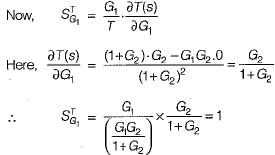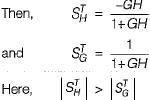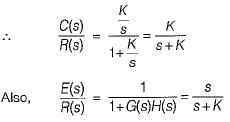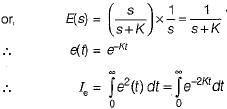Test: Feedback Characteristics - Electronics and Communication Engineering (ECE) MCQ
10 Questions MCQ Test GATE ECE (Electronics) Mock Test Series 2025 - Test: Feedback Characteristics
In the system shown in figure below, the sensitivity of the closed loop transfer function w.r.t. parameter a is


For the system shown in figure below,  is equal to (where, T = closed loop transfer function)
is equal to (where, T = closed loop transfer function)

 is equal to (where, T = closed loop transfer function)
is equal to (where, T = closed loop transfer function)
| 1 Crore+ students have signed up on EduRev. Have you? Download the App |
For the closed loop transfer function shown below, E(s)/R(s) is given by

Consider the following statements:
1. Closed loop system is less sensitive to variations in feedback path parameters than variations in forward path parameters.
2. Feedback can improve the stability or may be harmful to stability if it is not properly designed and applied.
3. Feedback controls the time response of the system by adjusting the location of poles.
Q. Which of the these statements are correct?
An unity feedback control system has a transfer function of  The open loop transfer function of this system is
The open loop transfer function of this system is
Assertion (A): Feedback in control system improves the time response of the system.
Reason (R): Time constant of an open loop system is less than the time constant of a closed loop system.
For the unity feedback system shown below, if the input to the system is a unit-step signal, then the integral square error  (t) dt for infinite value of gain k will be
(t) dt for infinite value of gain k will be

|
25 docs|263 tests
|
|
25 docs|263 tests
|


































